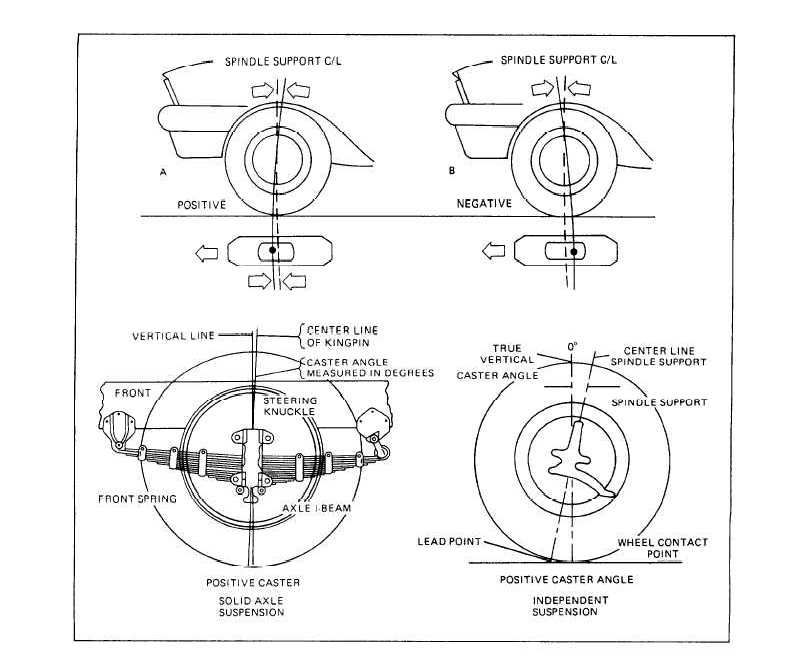
Figure 12-2. - Caster angle.
of excessive positive camber tries to pivot the wheels out on a vehicle.
2. CASTER ANGLE. When viewed from the side of the wheel, the caster angle is the degree to which the kingpin or ball joint tilts forward or rearward in relation to the frame (fig. 12-2). Like the camber angle, the caster angle is also measured in degrees. It is shown by a line drawn straight up and down, as in figure 12-2, and then a second line drawn through the center of the kingpin or pivot points. The caster angle is the angle formed at the point where the two lines cross, as viewed from the side of the vehicle.
A good example of caster is a bicycle. The fork is tilted backward at the top. A straight line drawn down through the front-wheel pivot or kingpin would strike the ground ahead of the point where the tire contacts the road. A wheel mounted in this fashion is said to have positive (+) caster or "just" caster. If the top of the kingpin is tilted forward so that a straight line drawn through it hits behind the point where the tire contacts the ground, the wheel is said to have negative (-) caster.
On a vehicle with axle suspension, caster is obtained by the axle being mounted so that the top of the steering knuckle or kingpin is tilted to the rear. On a vehicle with
Continue Reading